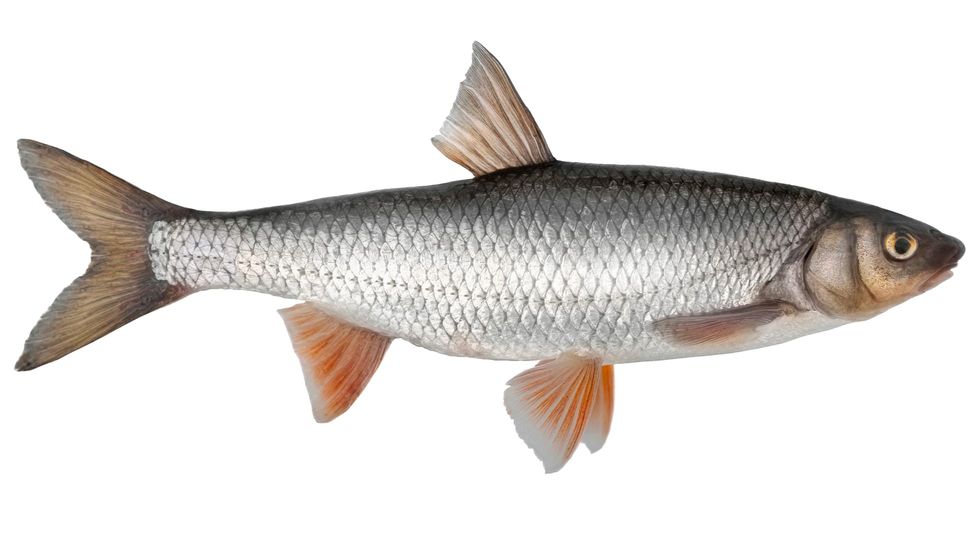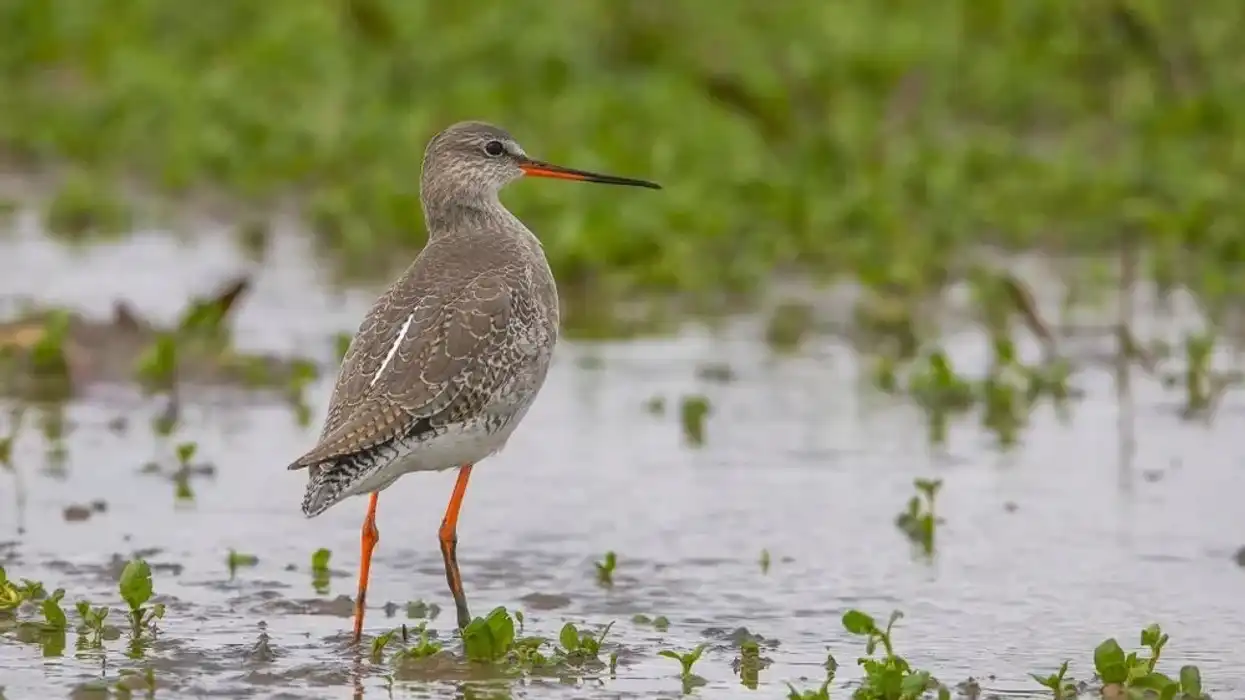The sand shiner is a freshwater fish of North America that is widespread throughout its distribution. It belongs to the family Cyprinidae and the order Cypriniformes.
It is indigenous to Eastern Montana. They are scientifically known as Notropis stramineus (Cope).
Notropis stands for keeled ack, whereas stramineus refers to their pale amber body color. They are endemic throughout North America. Their distribution ranges from Quebec to Mexico.
They can be mainly spotted in the Mississippi, Missouri, and the Great Lakes drainage. Their distribution stretches out to Colorado, Montana, New Mexico, Tennessee to New York, and Wyoming to Texas.
They can be spotted occasionally in the Rio Grande, mainly on the Edwards Plateau as well as in the Red River. This fish species is one of the tiniest in Montana.
This fish species is quite spectacular to gaze upon as they have a silvery head along with a dark-colored stripe running down the dorsal fin. This dark stripe splits into two distinct black dashes and is divided by a clear space. They are quite small, with a total length range of 1.7-3 in (4.3-7.6 cm).
The sand shiners move around in large schools in shallow water bodies, primarily during spawning season. These shiners become sexually active at the age of one or two.
They are a fascinating species of fish. Please keep reading to get to know more about them, such as their physical characteristics, diet, life span, habitat, and more!
If you liked reading our sand shiner interesting facts, you can check out neon tetra facts and smelt facts as well!
Sand Shiner Interesting Facts
What type of animal is a sand shiner?
The sand shiner, Notropis stramineus, is a species of fish that is indigenous to the Montana plains region. It can be found across Missouri and Mississippi river basins, Great Plains, east to the Great Lakes area.
It can also be seen in the Rio Grande occasionally, primarily on the Edwards Plateau as well as in the Red River. Similar to the rainbow trout, their diet comprises different types of food, mainly aquatic and terrestrial insects.
What class of animal does a sand shiner belong to?
The sand shiner, Notropis stramineus, belongs to the class Actinopterygii and the order Minnows (Cypriniformes).
How many sand shiner are there in the world?
The population of these freshwater fish has not yet been evaluated. However, we do know that their population trend is stable.
Where does a sand shiner live?
These freshwater fish inhabit wetlands (inland). They are widespread throughout North America. Their distribution ranges from Quebec to Mexico.
They can be mainly spotted across the Missouri and Mississippi river basins, Great Plains, east to the Great Lakes area. Their distribution stretches out to Colorado, Montana, New Mexico, Tennessee to New York, and Wyoming to Texas. They can be spotted occasionally in the Rio Grande, mainly on the Edwards Plateau as well as in the Red River.
What is a sand shiner's habitat?
The sand shiner, Notropis stramineus, can be found in small, as well as large, streams that have rapid currents and clear water, along with sand at the bottom. Their widest distribution of sand shiners is at the mouth of the streams, as concluded by a study in Southeast Montana.
During the spawning season, the sand shiners choose to reside in shallow regions of water bodies. However, they can dwell in bigger streams with faster currents.
They can reside in streams of various extents but tend to avoid acidic and alkaline conditions, with a pH lower than 7 or higher than 9.6. Although, the pH of streams is approximately 8.0 in the southwest, where this species can be seen.
Who do sand shiners live with?
Sand shiners can be spotted swimming around in large schools in shallow clear streams, especially during the spawning season.
How long does a sand shiner live?
The sand shiner, Notropis stramineus, can live for around three years, which is the minimum life expectancy of the rockmover wrasse!
How do they reproduce?
These shiner fish become sexually active at the age of one/two years. Their spawning season begins in the early days of August in Iowa.
Their strategy for reproducing is known as 'broadcast spawning,' which is an external method of reproduction where the eggs of the shiner fish are laid by the female and then fertilized by the male shiner by releasing sperm into the water. The female can lay about 150-1000 eggs in a year.
An egg ranges between 0.03-0.04 in (0.76 -1 mm) in diameter length.
These broadcast spawners spawn in lowland-upland habitat with the temperature ranging between 65-99oF (18.3-37.2oC). The males, as well as females, do not exhibit parental care.
What is their conservation status?
The conservation status of these North American fish is of Least Concern as per the IUCN Red List and is not endangered. These fish are an excellent indicator to check the quality of water in streams and thus are important for conservation.
The population trend of this species is currently stable in the United States. There has been a steep decline in the Pecos River population because of water management practices, due to which New Mexico offers limited protection.
Sand Shiner Fun Facts
What do sand shiners look like?

*Please note the main image and this image are of a common dace that belongs to the same family as the Sand Shiner. If you have an image of a Sand Shiner please let us know at hello@kidadl.com.
The sand shiners are very tiny, with a total length range of 1.7-3 in (4.3-7.6 cm). They have reached a maximum length of 3.2 in (8.2 cm) to date.
They are tiny minnows that possess a silvery coloration along with seven anal fin rays. They have a silver head along with a stripe of dark color running down the dorsal fin.
This dark stripe splits into two distinct black dashes and is divided by a clear space. Their fins possess no dark-colored markings and are transparent. Their scales are as tall as they are wide and are located behind the head, along the lateral line.
They have a silvery coloration along with an olive back, white underside, and a black stripe running down the back's middle. The body of this species is flat-sided slightly but not deep.
How cute are they?
The physical characteristics of this fish are absolutely stunning. To us, they look quite fin-tastic!
How do they communicate?
The sand shiner, Notropis stramineus, communicate with each other during the spawning season by swimming next to each other.
How big is a sand shiner?
The sand shiners are the smallest shiners present in Montana. They range between 1.7-3 in (4.3-7.6 cm) in length, which is approximately the same length as rainbow shiners.
How fast can a sand shiner swim?
The speed of the sand shiner, Notropis stramineus, is not yet known. However, we do know that these fish are quite active during the breeding season and swim in large schools.
How much does a sand shiner weigh?
The weight of the sand shiner, Notropis stramineus, has not been evaluated yet.
What are the male and female names of the species?
There are no specific names for the males and females of this shiner species.
What would you call a baby sand shiner?
The baby sand shiner can be referred to as fry.
What do they eat?
The Notropis stramineus, sand shiner, has a wide variety of food in its diet. Their major food items are aquatic and terrestrial insects that are quite small in size, along with fine detritus.
They can also consume the phytoplankton that is accumulated at the bottom, along with aquatic larvae and nymphs. They are known to consume Trichoptera larvae, plant matter, dipterans, and corixds. These tiny fish are preyed upon by the flathead catfish and largemouth bass.
Are they dangerous?
The Notropis stramineus is not dangerous at all.
Would they make a good pet?
Yes, these North American fish make great pets as they are quite easy to take care of, just like all minnows. However, it must be kept in mind that this species does not do well if kept with larger species as it'll end up getting consumed by them.
Did you know...
The sand shiners got introduced to Arizona accidentally as they were stocked together with largemouth bass.
They are utilized as a bioassay animal when environmental toxins' effects need to be detected.
How many eggs do sand shiner lay?
The females lay 150-1000 eggs per year. The males are broadcast spawners who fertilize these eggs externally.
Why sand shiner is called so?
This species is called Notropis stramineus (Cope) scientifically. They are called so as Notropis part of their name implies keeled ack, and stramineus part of their name originates from their body's pale amber coloration.
It was shown by Gilbert and Mayden that N. ludibundus Girard is an earlier published name of N. stramineus. Although, N. ludibundus is suppressed, whereas the specific name N. stramineus is conserved. Their common name originates from the dazzling shine their body gives when the sun's light hits them.
Here at Kidadl, we have carefully created lots of interesting family-friendly animal facts for everyone to discover! Learn more about some other fishes from our thresher shark surprising facts or yellowfin tuna fun facts pages!
You can even occupy yourself at home by coloring in one of our free printable Sand shiner coloring pages!










